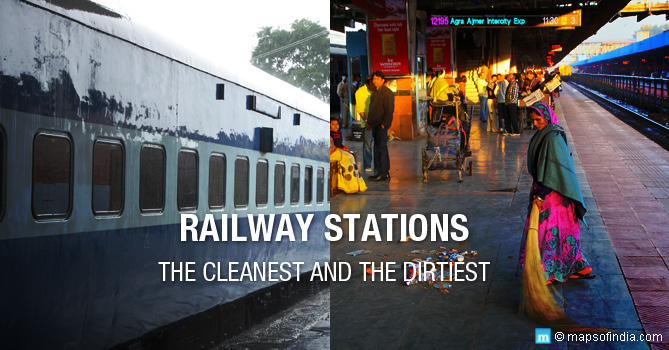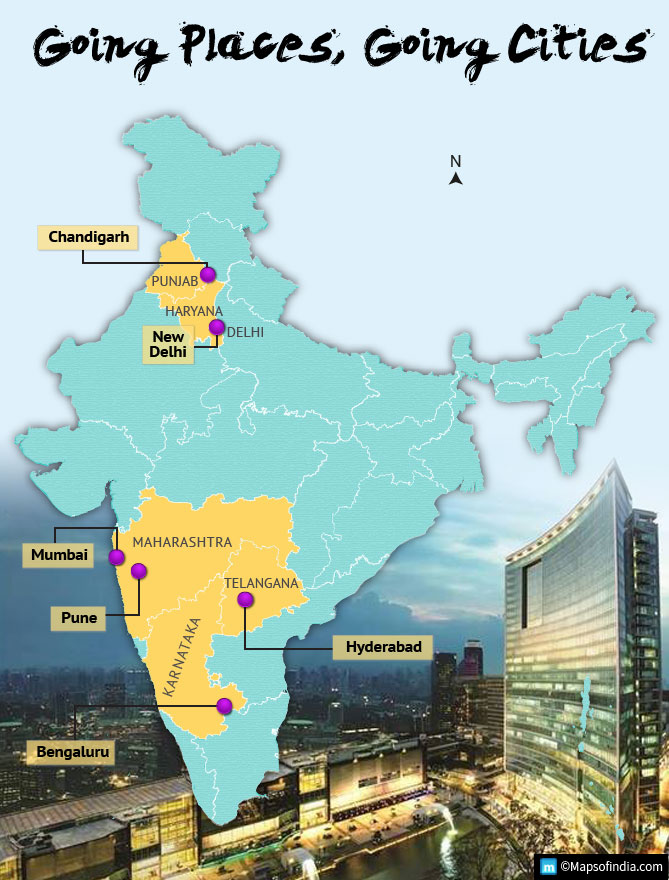Swachh Rail Swachh Bharat
In his Rail Budget speech, Union Minister Suresh Prabhu had emphasised the need to make Indian Railways, the mainstay of travel within the country, one of the cleanest modes of transport. The sheer numbers using trains and railway stations in the country makes this a daunting task. The minister had promised that this financial year the government would take steps to clean up nearly 8000 stations in the country. “The idea is to make the entire rail network clean. This is just the beginning of a process which will actually and eventually bring all stations on a par to a particular standard,” said the minister as he revealed the results of a survey that ranked Indian railway stations on the basis of their cleanliness. The survey is part of the government’s ‘Swachh Rail Swachh Bharat’ mission, which again is tied in with the Swachh Bharat Abhiyan, one of the flagship campaigns of the NDA government.
Rankings – Cleanest Railway Stations
Among the 75 ‘A-1’ category railways stations, the station at Diamond City, Surat in the western state of Gujarat was ranked as the cleanest station in India. Rajkot, also in Gujarat was second. The third position went to one of the most important rail junctions in Chhattisgarh – Bilaspur. Next came two stations from Maharashtra – Solapur and Mumbai Central. Chandigarh Railway Junction from City Beautiful was ranked next and then came Bhubaneshwar in Odisha and Vadodara in Gujarat.
Among the 332 stations covered under the ‘A’ category, the cleanest station was Beas in Punjab. Jamnagar, one of the historic and cultural hubs of Gujarat, and Gandhidham, the economic capital of Kutch, (both from Gujarat) ranked next. The Prime Minister’s home state does seem to have made considerable strides in cleanliness index going by both ‘A-1’ and ‘A’ station rankings. Following Gandhidham, Vasco Da Gama station from the colourful coastal state of Goa was deemed cleanliest. The historic and regal city of Kumbakonam from Tamil Nadu is reported to have the next cleanest station. Following Kumbakonam, Nasik Road in Maharashtra found its place among the cleanest ‘A’ category train stations in the country.
In 2015, the cleanest cities according to the Swachh Bharat Rankings were – Mysore (Karnataka), Thiruchirapalli (Tamil Nadu), Navi Mumbai (Maharashtra), Kochi (Kerala), Hassan (Karnataka), Mandya (Karnataka), Bengaluru (Karnataka), Thiruvananthapuram (Kerala), Halisahar (West Bengal), and Gangtok (Sikkim). It is a surprise that none of the stations from these cities has ranked among the cleanest railway stations.
Rankings – Dirtiest Stations
The survey also declared the rankings of the dirtiest stations in the country among the various categories. Coming up at the rear of the rankings was Guwahati Junction in Assam. The station forms the hub of connectivity to the hilly north eastern states. Hazrat Nizamuddin, one of the five main stations managed by Northern Railways in the national capital was ranked second dirtiest. Sealdah in West Bengal came next. Sealdah is one of Kolkata’s busiest stations and handles commuter as well as inter-city trains. Next comes a major train junction station from Uttar Pradesh – Kanpur Central. Bhopal Junction, managed by the West Central Railways and is the major connecting center for visitors to Sanchi, came close behind Kanpur. Muzaffarpur Junction in Bihar ranks next among the top dirtiest stations of the country in the ‘A-1’ category.
Uttar Pradesh seems to have performed poorly among the clean stations rankings. The top three dirtiest stations in the ‘A’ category railway stations all belong to this state – Shahganj, Ballia and Janghai were ranked on top. Madhubani, home to the famed Madhubani paintings in Bihar, is reported to be next among the dirtiest rail stations survey. The next slot, also an ‘A’ category station from Bihar, went to Bakhtiyarpur. Despite being known for its general cleanliness and beauty, Karnataka seems to have taken up the next slot with Raichur coming up as the next dirtiest station in India.
The Survey
The task of conducting the survey, on the basis of which these rankings have been finalized, was conducted by the Indian Railway Catering and Tourism Corporation (IRCTC). The IRCTC further roped in leading business consultants and market researchers, TNS India Pvt. Ltd.
Between January and February 2016, a number of passengers across various regions were interviewed and asked to rate the cleanliness and hygiene of 407 railway stations across the country based on 40 different parameters. The stations include 75 ‘A-1’ category stations and 332 ‘A’ category stations managed by the 16 zonal railways of India.
‘A-1’ category stations include those that register an annual revenue of INR 60 crore and above while ‘A’ category stations are those that register an annual revenue between INR 6 crore and INR 50 crore. What has been released for now by the minister is merely the preliminary report. The final report is likely to include a variety of viewpoints including responses from railways staff, vendors and a study of the available infrastructure. Once the final report is submitted, the Ministry of Railways is likely to take action to improve the cleanliness quotient of major stations.
Explore More :
How is India Planning to Stop Train Accidents?
Yet Another Rail Crash; How Safe it is to Travel in Indian Trains?
Free Wi-Fi Railway Stations in India
Railways introduces ‘surge pricing’ in Rajdhani, Duronto and Shatabdi trains
Google to Provide Wi-Fi Hotspots at 500 Railway Stations





